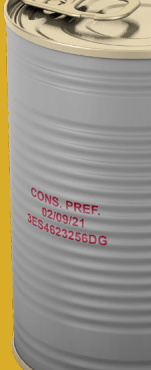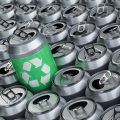Thermochromatic Ink: an ally of food safety
A thermochromatic ink that changes color at high temperatures now offers food manufacturers a much more reliable method of coding, says a press release from Markem-Imaje, a U.S. manufacturer of product identification and traceability solutions.
Through a more evident colour change, this ink indicates the correct sterilisation of the packaged foodstuffs.
“Designed for autoclaving filled cans or plastic bags, the ink changes from black to blue when the food package reaches the correct temperature of between 115 and 125°C.”
This is relevant in the food sector, where heat-treated ready meals are becoming increasingly popular, explains the company’s press release.
“Especially needed is a technique applicable to the increasingly common plastic bags used for these types of foods, as well as for baby food and pet food.”
Markem-Imaje’s MS596 ink, while not a guarantee that sterilization has actually taken place, helps manufacturers to indicate that the process has been carried out.
One of the great benefits of this ink is its drying time – barely a second on any material, which of course maximises production output. Not only this, the MS596 ink is smudge resistant so it preserves the legibility of the codes, which was one of the problems that were presented.
Markem-Imaje’s MS596 thermochromatic ink is suitable for printing both metal cans and plastic films. It is an ink with reduced toxicity, as it is an ink that has contact with food, it follows strict regulations, such as the Swiss one.
It is free of ingredients hazardous to aquatic life and contains no methanol, which is known to be highly toxic to the nervous system of humans. The American company Markem and the French company Imaje merged in 2007 and the new company Markem-Imaje was born. Markem-Imaje is a wholly owned subsidiary of Dover Corporation, based in the United States.








